Home / Latin America & Antarctica / Brazil / Rio de Janeiro: The Jewel in t…
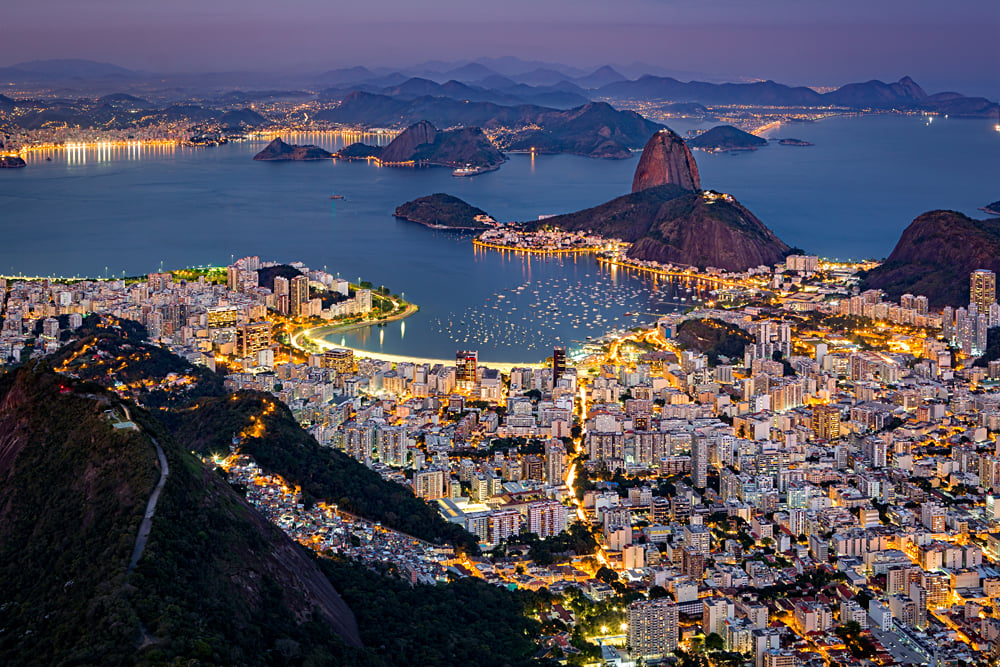
Rio de Janeiro: The Jewel in the Crown of Any Brazil Vacation Package
No Brazil vacation package feels complete without a visit to Rio de Janeiro, “The Marvelous City.”
Few destinations stir the emotions like Rio de Janeiro. The city has become shorthand for a tropical urban playground, characterized by endless white sand beaches, one of the world’s most spectacular natural settings, and an insatiable appetite for a good party.
And yes, there can be a little trepidation in there too. Rio isn’t your typical city break, but it is a rewarding one, combining the best elements of an ‘out there’ adventure with an historic city, some of the world’s best urban beaches, and those glorious mountain views.
The Marvelous City From Above
Two Rio attractions tower quite literally above all others, making for dramatic postcard-type photos of your Brazil vacation package. When cariocas (Rio locals) say Jesus watches over their city, they mean it. The famous Cristo Redentor – Christ the Redeemer – has gazed out over Rio, his arms spread to embrace the city, since 1931. The beloved soapstone sculpture is set atop the Corcovado, Rio’s most prominent mountain peak. As such, it’s visible from almost anywhere in the downtown or Zona Sul (southern beach area). At a height of just over 700 metres, getting to the peak was a hefty challenge for hikers until 1884, when the Corcovado train was first commissioned. Now, it’s hard to imagine the Corcovado without this historic train line, which served as an essential link to the city for locals on the mountain before car ownership became commonplace. These days, the Corcovado train is busier than ever, with tourists heading for their moment with the Redeemer, taking in the incredible views to be had from his base. This Rio panorama stretches from Stadium Macarena in the north, over the downtown, Copacabana and Ipanema beaches, and Lagoa Rodrigo de Freitas, to the mountains known as the Dois Irmaos (Two Brothers) in the south. A photo with Jesus (usually with arms similarly outstretched) is always a popular shot, as is a portrait photo taking in the entire statue from its base. In fact, there are padded mats embedded in the viewing platform specifically so photographers can lay down for the best angle!
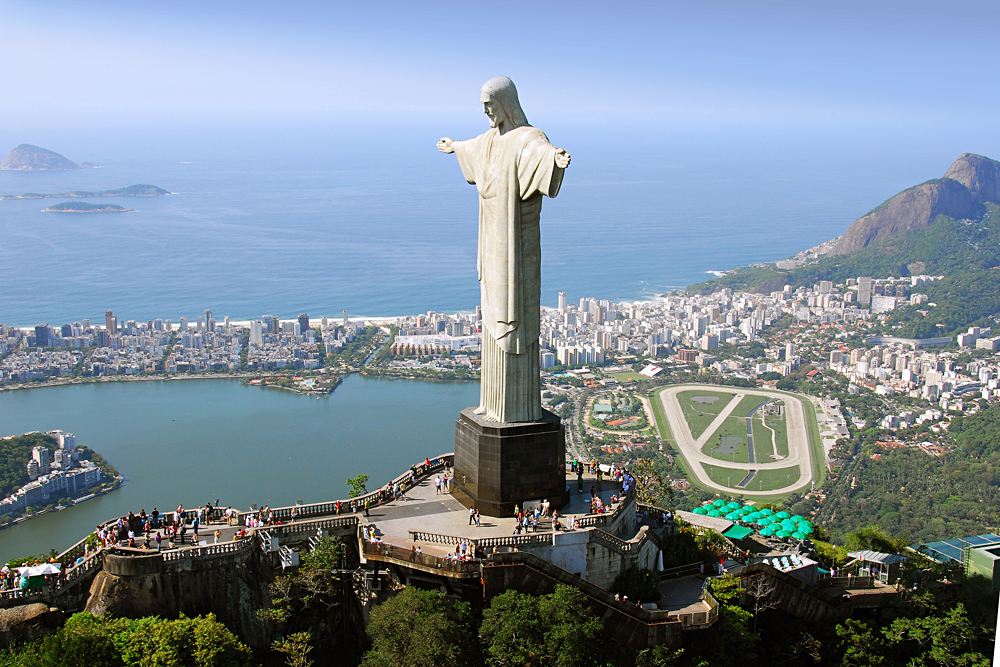
What exactly has Christ been staring at all these years? He’s looking directly at Pao de Acucar. Also known as Sugarloaf Mountain, this is Rio’s other famous mountaintop view. Watching over the entrance to Guanbara Bay, Sugarloaf rises over the waters just north of Copacabana Beach. A natural marker between beach Rio and traditional Rio, it’s also the perfect spot for a panoramic view of the city proper, including the Corcovado and its Christ. The modest, but uniquely shaped 396 metre peak is reached via two cable car rides, the first to Urca Hill, and the second to the top of Sugarloaf itself. Bubble shaped cars ensure a spectacular view along the way, but even those who find themselves squeezed into the middle (it’s a busy route!), will have no trouble finding a great spot to take photos at the top. Keep an eye out for rock climbers scrambling up one of the 270+ routes to the summit, and think about the Herculean effort required to build the cableway, which was only the third in the world to be built when it first opened in 1912.
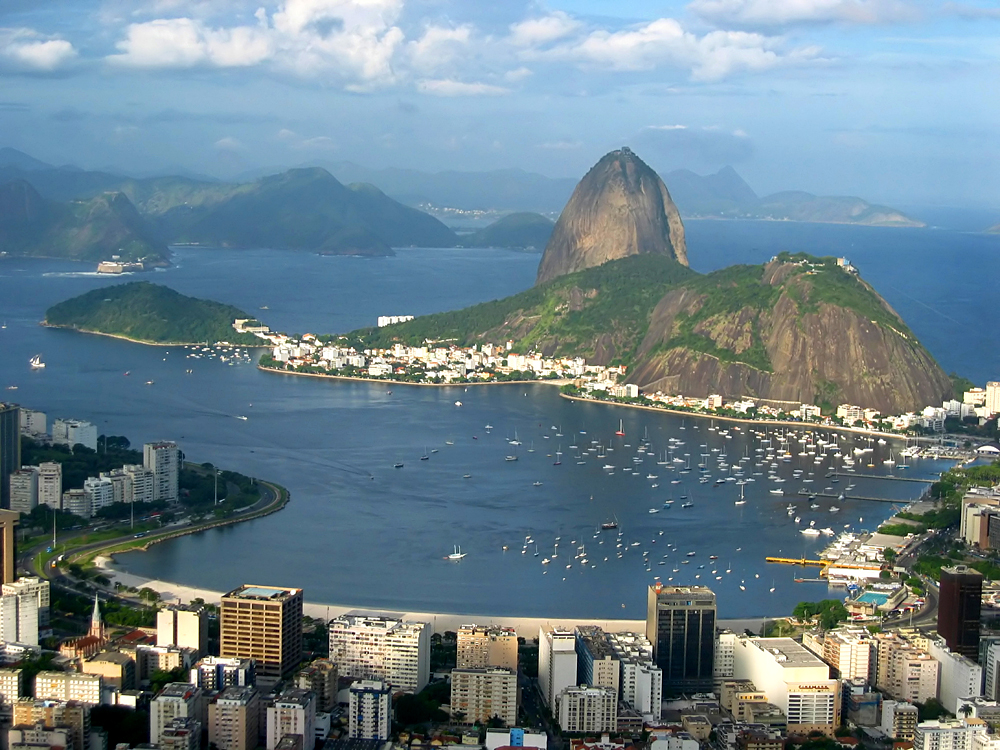
A City of Beaches… at Least, Since the 1950s
Copacabana is undoubtedly Rio’s glamour beach. A four kilometer stretch of flawless, powdery white sand is hard to turn down, particularly one with such appealing temperatures year round, and a refreshing caipirinha – Brazil’s national cocktail – on offer every time you manage to pull your eyes away from the view. Round the southern heads and Aproador (not so great for swimming, but hugely popular with surfers), and you’ll reach Ipanema, a beach that seems just as popular and almost as famous as its sprawling neighbour. Leme and Leblon beaches are the smaller, less crowded alternatives at the far eastern and western ends of Rio’s main beach drag.
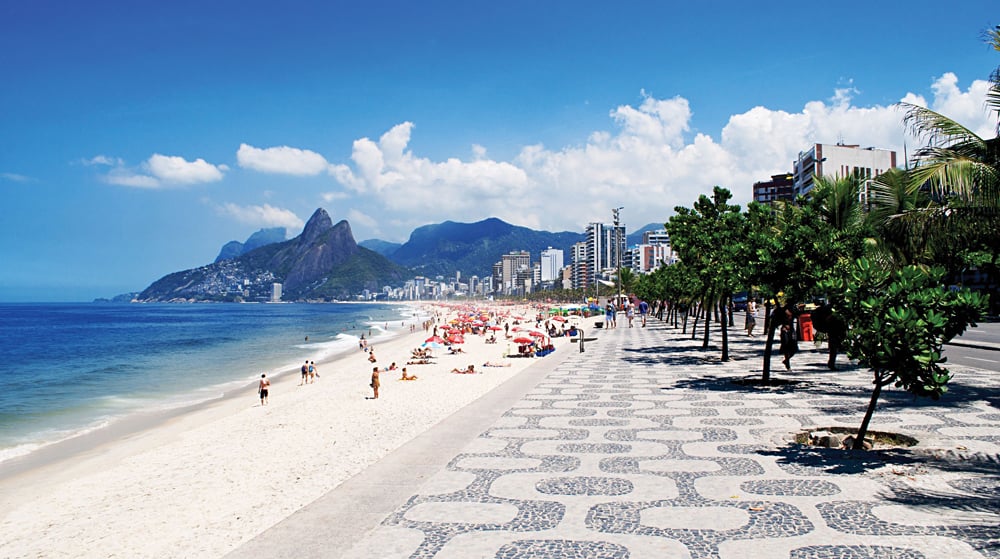
Rio’s love affair with the beach is a relatively recent addition to its history. Consider that the city dates back to 1565, then understand that Copacabana wasn’t considered a part of Rio – or settled – until the first tunnel through the mountains was completed in 1892. Another followed in 1904, and while the beach had intrigued and inspired poets and writers for much of the 19th century, it wasn’t until the 20th century, with an influx of rich Cariocas from the Santa Teresa neighbourhood, that it began to look anything like what it is today. One of Copacabana’s most famous buildings and arguably its most luxurious hotel, the Copacabana Palace opened in 1923. All these years later, it remains Rio’s most iconic stay, to be enjoyed as part of a Brazil vacation package.
Suggested Itinerary:
4-Day Copacabana Palace: Stay of Distinction
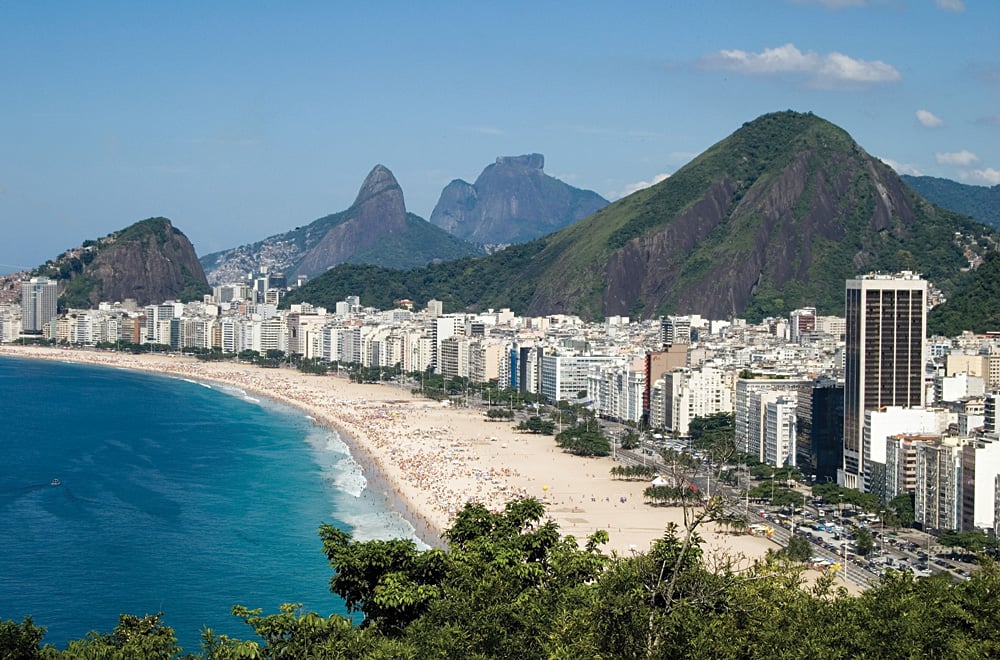
Copacabana and Ipanema beaches will each take up a good half-day on your Rio de Janeiro vacation, but there are few other attractions nearby, except for the odd historic gem such as Copacabana Fort. Consider these your relaxation days, as part of your Brazil vacation package, or sack out on the beach for the afternoon after a visit to the Corcovado or downtown. One attraction you won’t want to miss is the sunset over the Two Brothers, best seen from the rocks of Aproador, facing south along Ipanema and Leblon beaches. This nightly show earns a round of applause from the entire beach, a little ritual thanking nature for all its gifts to The Marvelous City.
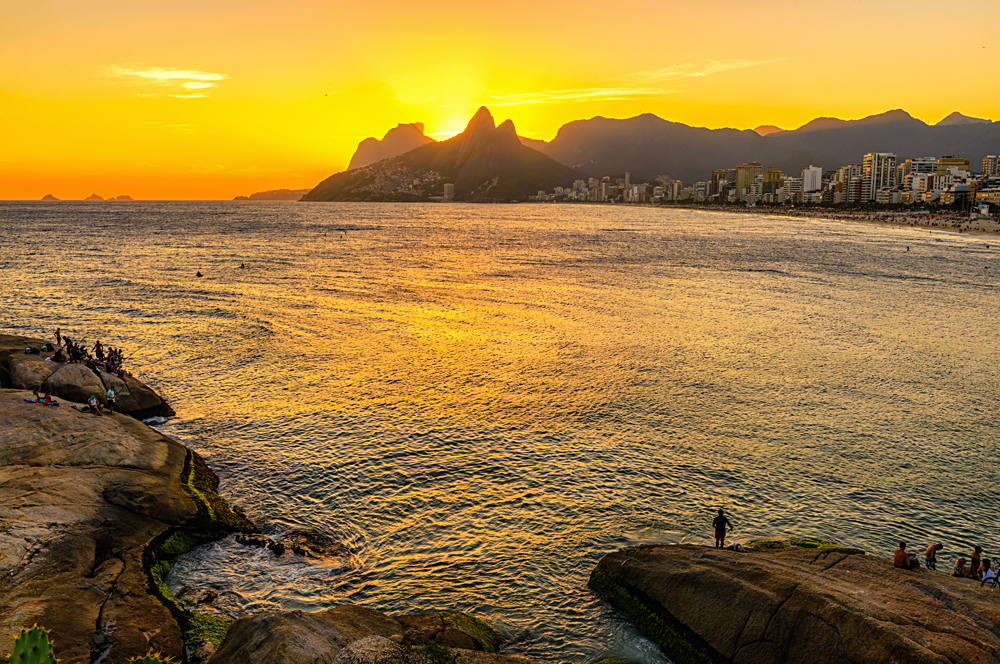
Finding and Making History in Lapa and Santa Teresa
Rio’s contribution to Brazilian culture goes back centuries, and to find that history, you need to tear yourself away from the beach and head downtown. These are the neighbourhoods that made Rio, Rio, and aren’t to be missed. A stroll through Cinelandia gives you a taste of Rio glamour, pre-Copacabana. A number of its beautiful old theatres have been restored, though Cinelandia is now home to far more bars and restaurants than movie palaces. A short walk away, the famous Carioca Aqueduct marks the entrance to Lapa. Rio’s Bohemian heart, this area is home to arguably the most authentically local nightlife in town. If you’re looking to try real Rio cuisine, as part of your Brazil vacation package, sip (yet more) caipirinhas and samba the night away, a bar in Lapa is the place to do it.
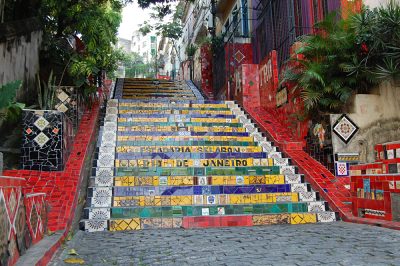
Tales of Rio’s most colourful characters fill these streets. They include Chilean artist, Jorge Selaron, who left to the city one of its favourite attractions, the Selaron Steps. Toiling for years under the scorn of his neighbours, Selaron transformed the drab stairs that led past his front door into a treasure trove of art and Rio iconography, not to mention the most photographed stairway in Brazil. Another infamous local legend is Madame Sata, a drag queen whose cabaret performances were as legendary as her street battles with the police. A skilled capoeirista (capoeira fighter) and former gangster, Madame Sata was famous not just as an irreverent entertainer, but for besting quartets of armed policemen with her bare hands. In fact, she’s believed to have once battled twenty-four men into a stalemate, seriously injuring several of them. Today, she is remembered as a local hero who stood up for ‘deviants’ of every stripe during Brazil’s oppressive post-abolitionist era. Of course, the city’s most famous creative export isn’t forgotten. You can pay your respects to Carmen Miranda at number 13 Travessa do Comercio in the Centro/downtown district, where Brazil’s first bona fide Hollywood legend (once the highest paid woman in the United States) is honoured with a simple sign on the door of her childhood home. The Portuguese-born star was returned to Rio in death, and now rests in Sao Joao Batista Cemetery in the Botafogo neighbourhood. The nearby museum showcasing her career is now sadly closed.
Rising from these ‘deviant’ streets, the odd conical looking building behind the aqueduct is – not without irony – the Metropolitan Cathedral. Simultaneously one of Brazil’s most beloved and hated buildings, this eyesore to those who hate modernist architecture dazzles once you step inside. Here, you can take time to appreciate its four enormous stained glass windows, as well as the innovative design which maximizes ventilation in Rio’s tropical climate. You may also catch sight of a streetcar barreling along the top of the aqueduct. Popular with tourists (and priced accordingly), this historic line leads into Santa Teresa. Once Rio’s most affluent neighbourhood, it now boasts hip bars, small galleries, and fantastic city views.
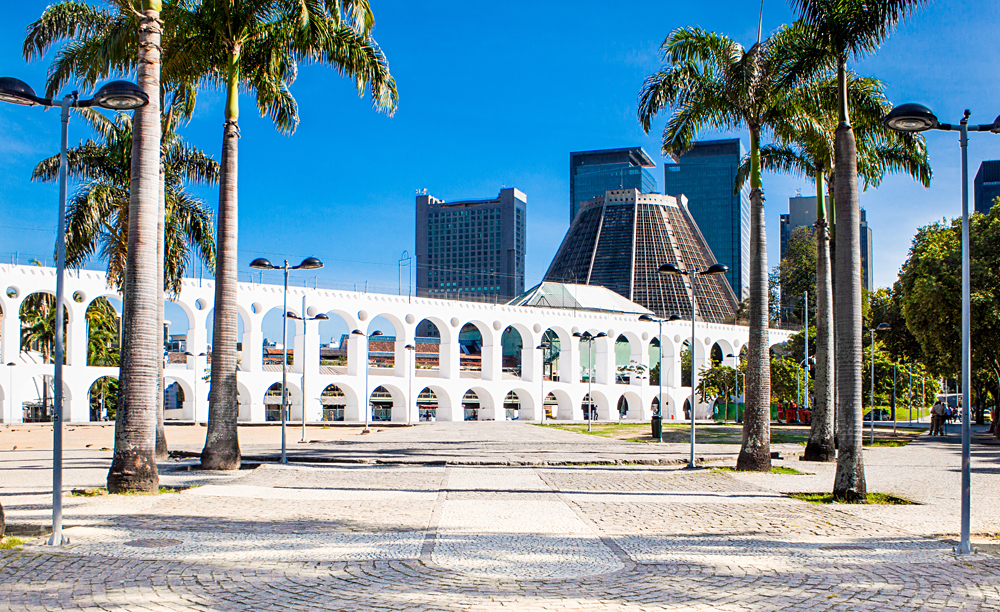
On the Waterfront
While its beaches need no introduction, Rio’s main waterfront is Guanbara Bay. The big cruise ships come in via the waterside Gamboa and Saude districts. Until recently, these didn’t exactly paint the city in its most attractive light. But the elevated freeway, once a symbol of downtown decay, is no more. In its place, a tunnel whisks traffic under the feet of sightseers, who now wander the transformed area, ogling the historic remnants of the former slave trade, the world’s largest street mural, the aquarium, Rio’s art museum, and the eye popping, eco-friendly Museum of Tomorrow. At this stage, the area’s renewal is still quite fresh, so most of the sights can be seen in about an hour, plus whatever time you choose to spend in the museums. Then, simply hop aboard the new light rail system linking the port to the subway and other transit hubs, to continue exploring the city.
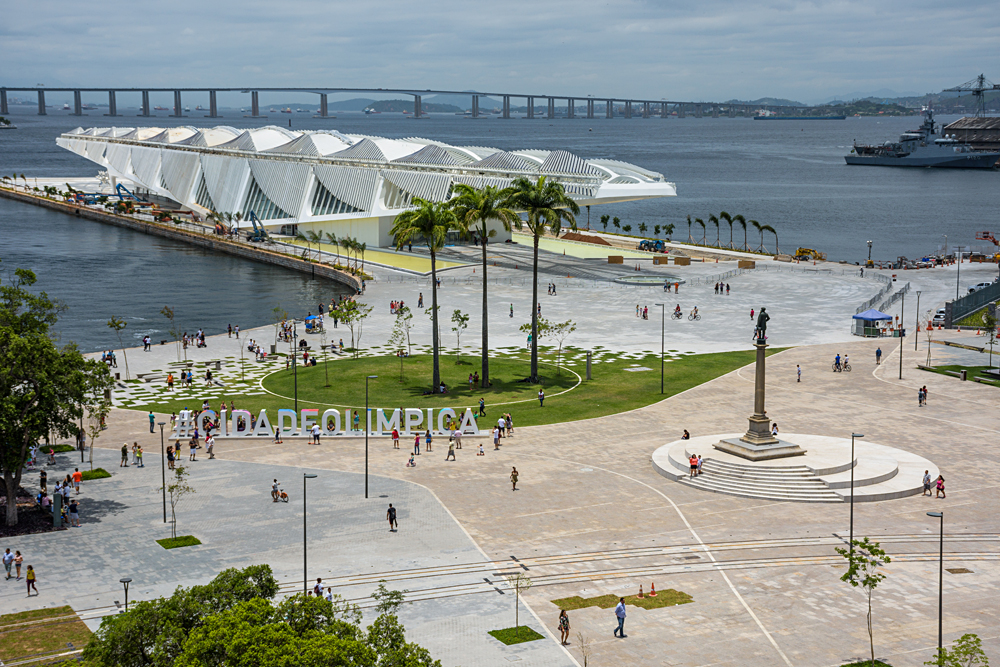
Some Rio Essentials
Even though Rio de Janeiro is the highlight of any Brazil vacation packages, some Globetrotters let tales of crime, violence, or disease turn them off what ought to be a dream trip. Let’s be abundantly clear on this. Rio is a big city in a country with a huge income gap, and as such, visiting it requires a few extra travel precautions. But the old cliché, “alert, but not alarmed” applies here, and most visitors to Rio will leave with only happy memories. Here are some tips to keep you in that happy majority:
- Rio is not a flashy city. Leave expensive jewelry at home and keep your clothing simple.
- Don’t carry more cash with you than you need for the day or night. Credit cards are accepted almost everywhere.
- Keep an eye on card charges within a week or two of your trip. ATMs in shopping malls and banks are usually safe and reliable, but others have been known to skim card numbers.
- Avoid the streets of Centro after dark, and don’t enter or leave Lapa or Santa Teresa at night on foot. The Zona Sul is generally safer, but if it’s late and the streets are quiet, play it safe and hail a very affordable cab. Uber is also hugely popular, cheap, and very reliable in Brazil. Wi-Fi is widespread, but consider a prepaid Brazilian SIM card to ensure you’re never stuck.
- Keep bags strapped across your body while walking and keep them in your lap or at your feet when seated in a café, bar, or restaurant. Don’t leave valuables on a table top, and don’t flash money or cell phones out in the open where they can be grabbed by passers-by.
- Don’t enter a favela unless it’s with a guided tour. Many of these communities have become much safer in the last decade (much like Rio as a whole) and some safer ones such as Rocinha even offer guest houses and B&Bs. These are still the exception however. As a rule, only visit a favela on a guided favela tour.
- Swimming at the beach can be tricky in Rio in terms of keeping your valuables safe. Everyone has a different experience and so, different advice. In general, don’t bring anything valuable to the beach, just a little cash (you’ll be surprised how many refreshment stalls accept credit cards) and your beach essentials like sunblock (outrageously expensive in Brazil, so consider BYO in checked luggage). Some hotels will even hold your room key at reception for safe keeping. Many Rio regulars and locals simply rely on making friends with their “beach neighbours” and asking them to mind their things while they’re in the water – in exchange for returning the favour, of course!
Related Article:
Essential Tips for Staying Safe in Rio de Janeiro, Brazil
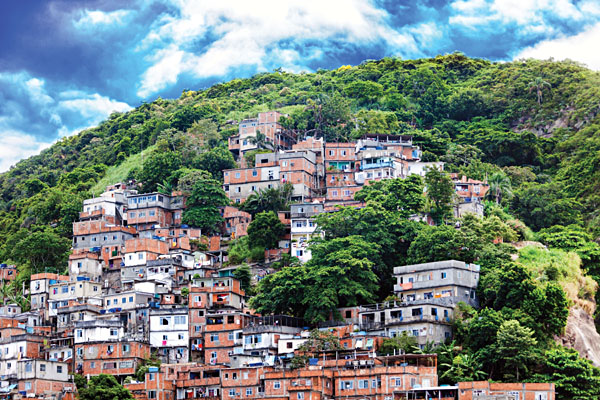
Get more travel inspiration by email.
Subscribe
0 Comments

Get the latest travel trends & hear about the best deals on vacations around the world.
If you’re a Globetrotter, these are the newsletters for you!



